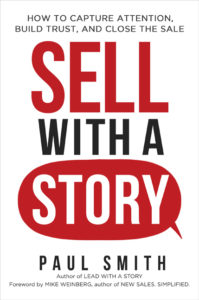Podcast: Play in new window | Download | Embed
Subscribe: RSS
Podcast (lead-with-a-story-podcast-series): Play in new window | Download | Embed
Subscribe: RSS
Before I became an author, I spent 13 of my 22 years in the corporate world working in consumer research. So I got to attend a fair number of consumer research conferences. One of my favorite parts of those conferences was getting to hear about interesting research challenges and what the researcher did to overcome them. One of the most memorable and impactful examples I ever heard wasn’t even from one of the keynote speakers. It came from a guy I was talking to over a break at the coffee station.
 He worked for a company that made window-unit air conditioners. They wanted to know how much more consumers would pay for an air conditioner that was significantly quieter than all the other units on the market. The problem was, they hadn’t actually invented this quiet air conditioner yet. So they couldn’t just have consumers try it and ask them how much they’d pay for it.
He worked for a company that made window-unit air conditioners. They wanted to know how much more consumers would pay for an air conditioner that was significantly quieter than all the other units on the market. The problem was, they hadn’t actually invented this quiet air conditioner yet. So they couldn’t just have consumers try it and ask them how much they’d pay for it.
They also couldn’t just ask people, “How much more would you pay for a unit that only produced 35 decibels of sound? What about only 20 decibels?” Unless you happened to be an acoustical engineer, you wouldn’t have any idea how loud that was.
What they decided to do was both creative and simple. They installed what looked like a regular air-conditioning unit in a window at one of their test labs. Only in this unit, they had taken the guts out. So it looked normal, but it was really just an empty shell. Then they cut a four-inch hole in the back and stuck a flexible tube in it. They ran that tube down the hallway and into another room where they plugged it into the front of another air conditioner that actually worked (the loud kind).
When consumers in the lab turned on the test unit, like magic, crisp cold air came blowing out, but almost without a sound. And by changing the length of the tube and how far away it was from the real air conditioner, they could change the sound level consumers heard in the test lab.
To me, this is a classic outside-the-box story. Meaning, you don’t need to work in the air conditioning business to get any value from it. In fact, I don’t even think you need to work in consumer research. It’s really a story about creative problem solving. I know many companies who, if faced with the same problem, would have spent millions of dollars developing working prototypes of the quiet air conditioners and then tested those. Or they would have come up with a sophisticated sound system with embedded speakers to simulate the sound levels they wanted to test.
The simplest solutions are often the best, and almost always the cheapest. Just hearing stories like this, I think, helps people see where they’re either being too sophisticated or just not being creative enough. So, the next time you have an interesting challenge or problem to solve, share this story with your team, and then see what kind of outside-the-box ideas you can come up with.
[You can find this and over 100 other inspiring leadership stories in my book, Lead with a Story.]
—
 Paul Smith is one of the world’s leading experts on business storytelling. He’s a keynote speaker, storytelling coach, and bestselling author of the books Lead with a Story, Parenting with a Story, and Sell with a Story.
Paul Smith is one of the world’s leading experts on business storytelling. He’s a keynote speaker, storytelling coach, and bestselling author of the books Lead with a Story, Parenting with a Story, and Sell with a Story.


 Connect with him via email here.
Connect with him via email here.
Follow him on Facebook, LinkedIn, Twitter, and Instagram.
Sign up for his newsletter here to get one new story a week delivered to your inbox.

